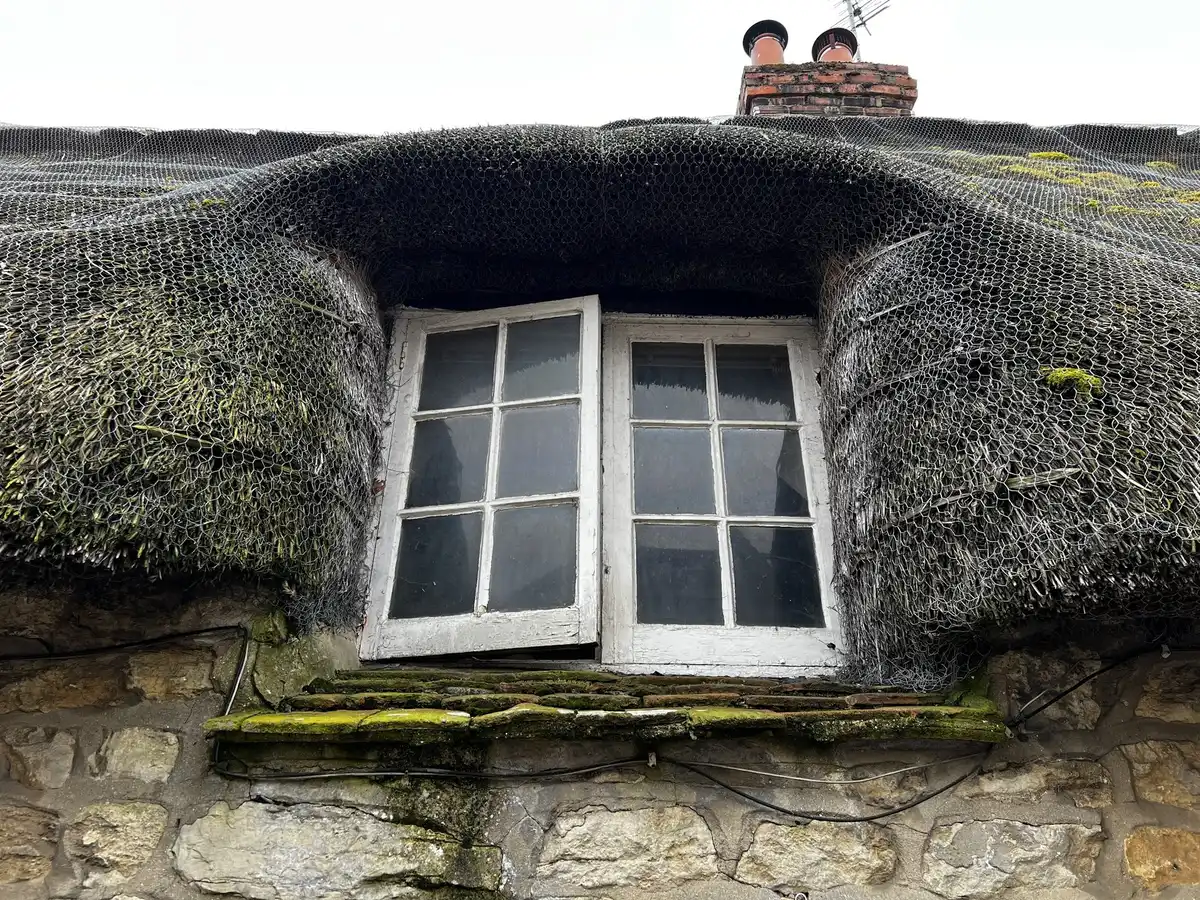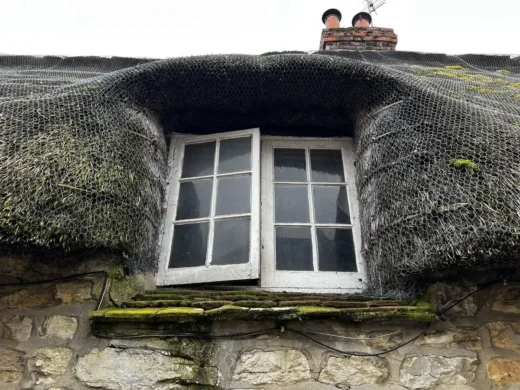Vacuum insulated glass for period property refurbishment, Building material tips, Home glazing
Revolutionising Period Property Refurbishment: How Vacuum Insulated Glass Eases Architects’ Insulation Challenges
18 April 2025
Renovating historic or listed properties can be a major headache for architects. On the one hand, you must protect a building’s heritage character; on the other, you are expected to satisfy modern requirements for energy efficiency, comfort, and sustainability. Bridging this gap often proves difficult—especially when it comes to upgrading windows. Traditional single glazing performs poorly in terms of insulation, yet completely replacing period sash windows with standard double glazing can lead to conflicts with local planning officers and conservation authorities.
A solution is emerging that strikes the perfect balance between preservation and performance: vacuum insulated glass (VIG). Companies such as Six Over Six Windows are demonstrating how this cutting-edge technology can be integrated into period sash windows without altering their iconic appearance.
Below, we explore the crucial pain points architects face in insulating heritage buildings and show how VIG is the key to success.
The Architect’s Dilemma: Preserving Aesthetics vs. Improving Performance
A challenge offered to architects restoring ancient buildings is a tug of war. The centuries-old façade-elegantly developing with its single-glazed sash windows-is simply charming but has been synonymous with poor thermal performance.
The objective is that any modernisation or change in the structure is completely opposed to what one would normally wish. From this we have built a clash with the authorities as that is in the local historical heritage that anything changed should preserve its history from the finest point in time.
Sometimes, they put the architects in such a miserable position wherein the building owner calls for change in one direction whilst the planners demand it in the opposite, with each view seemingly unthinkable!
Retain original sash frames – Many planning officials insist on original frames being kept due to their historic and aesthetic value.
Boost energy efficiency – Modern building regulations or occupant expectations demand improved insulation, meaning single glazing is no longer acceptable.
Maintain historical authenticity – Any change to glazing style, glass thickness, or window proportions can upset the period look of a façade, potentially leading to rejected planning applications.
Comply with budget constraints – Property owners often hesitate when costs begin to escalate, creating additional pressure to find a cost-effective option.
Enable all those features in a singular solution and you’ve got yourself an impossible challenge, tempting architects to reach for that magical technology that would make all the checkboxes disappear.
Why Upgrading Insulation in Period Properties Matters
Mitigating Heat Loss and Reducing Costs
Single pane windows are a likely cause of heat leakage-making the energy bills to skyrocket and the dwellings chilly. Historical developments often contain no cavity walls and out-of-date heating devices.
Therefore, architects working on such buildings resolve to accomplish a balance, protecting the structure while achieving the utmost practical heat transfer mitigation. This decreases operational costs for building possession and lessens the carbon footprint—becoming a priority for modern architecture.
Improving Acoustic Performance
As city centres become urban jungles with crowded roads, the stress on noise pollution has raised issue. Sash windows open the path for external noise. When working on a period project in London, or any other high-noise environment, architects and designers should figure out a solution to stop the noise without affecting the aesthetics.
Meeting Sustainability Goals
Sustainability is becoming a game-changing decision in the construction or renovation of any building by heading toward project completion. Many local authorities across the UK are pushing for higher environmental standards and clients expect zero-to-near-zero performance. Traditional single glazing thwarts these ambitions. Even with these buildings preserving great degrees of their original fabric, architects can help creep older buildings closer to modern sustainability benchmarks by giving them an insertion process that stands for some insulation.
The Power of Vacuum Insulated Glass (VIG)
Ultra-Thin Design Retains Original Aesthetics
An easy first glance casts a vacuum insulated glazing pane unto just about any normal double glazing. The distinguishing factor of a vacuum insulated glazed pane is that it has a near-zero pressure cavity between its two glass panes. Because of its minimally conducted space internally, heat transfer gets significantly impeded, giving such panes insulation approximately equal to that of standard double or triple glazing. Incredibly, VIG glazing is ultra-thin—it often is only a couple of atoms thicker than single glazing. From the architect’s standpoint, which loosely translates to saying as little as possible disruption to delicate sash frames or glazing mates, they should not make the building lose its period feel.
Light Weight and Enhanced Durability
The Period windows were designed to minimize any excessive weight on their frames, a significant factor considering that they were first employed on windows of Georgian and Victorian buildings. If a heavier double-glazed window is installed, the pulley systems may suffer, causing the sashes to bend and probably damaging the frames. The windows of the vacuum-insulated glazing will thus be at no risk of increased weight. Furthermore, double-glazing systems bear the additional benefit of a solid glass product.
Exceptional Thermal and Acoustic Insulation
With the vacuum in between the panes, heat transfer is drastically limited, allowing VIG to reach insulation values comparable or even greater than those found in a galore of more recent double-or triple-glaze units. They can also aid noise defies-which is so helpful when you are looking at projects in London, or any other bustling town or city where sound pollution can gnaw at occupant comfort.
Key Steps in Implementing VIG for Sash Windows
Assessment of Existing Windows
Before intervention can commence, it becomes imperative to acquire the status of any period sash windows. Conditions of rotting timber, warped frames, or failed joints are to be put to the architect’s gad for consideration. Assessments to test the frames to contain vacuum-insulated glass panels are yet to be believed mandatory for the remuneration schedule.
Precision Measurement and Manufacture
VIG must be custom-made to fit each window precisely. Detailed measurements—factoring in sash thickness, glazing bar alignment, and any decorative beading—ensure a seamless fit. By collaborating with specialist contractors like Six Over Six Windows, architects can guarantee millimetre-perfect manufacturing that mirrors the original single-glazed aesthetic.
Sympathetic Frame Refurbishment
Old windows often need substantial repair in the form of structuralising, or sometimes, enhancing their capacity for increased energy retention. Renewal involves filling in decayed areas with matching timber, draught-proofing upgrades, and possibly changes to the pulley system. Preservation of integrity is a must in all cases, respecting the authentic appearance of historical materials if any action that could change or damage them is taken.
Installation of VIG
The preceding first vacuum insulated glass unit adapted replacement for the old cladding of a single glass pane that has been installed in a prior edifice, thereby making the thinner-glass, lightweight VIG affixed to the new frames. Usually, this type of thin and light VIG would only require minimal alteration to the existing timber joinery. In order to have a façade appearing as unchanged, a care must be taken while placing it.
Finishing and Detailing
After fitting into the building, each sash is refurbished to appear to have been painted, stained, or varnished in accordance with the aesthetics of that period. The hardware is scrutinised for either retention or replacement with reproduction hardware to suit the era’s need, whether locks, lifting hooks, or pulleys. The finished product appears true to the original window with period detail but has very good insulation-for-now however.
Overcoming the Planning Hurdle
Obtaining permission to change windows in a heritage or conservation area can be tricky. Planners often look negatively on the use of double-glazing that changes traditional sightlines. However, architects find that VIG is more acceptable to planning officers since:
Minimal Change to Appearance
VIG retains the slim profile of single glazing, satisfying conservation requirements for authenticity.
Improved Energy Efficiency
Councils are under pressure to achieve sustainability targets and reduce carbon emissions, making them more inclined to approve unobtrusive insulation measures.
Respect for Heritage
By preserving original sash frames and replicating the classic glazing style, VIG projects convey respect for historic craftsmanship.
The cumulative benefits afforded by vacuum insulated glass renders it a compelling option to explore when dealing with listed building consent or preservation rules.
Why Choose Six Over Six Windows for Specialist VIG Installations
Six Over Six Windows has built a solid reputation in London by combining traditional craftsmanship with cutting-edge glass technology. Their expertise makes them an ideal partner for architects, particularly when balancing energy performance with heritage preservation.
Each of their projects is treated with a local authority planning notice, avec lesson on manufacturing processes, and discipline in period aesthetics while being focused on sash window refurbishment and VIG installation.
A Bright Future for Architects and Heritage Buildings
The marriage of vacuum insulated glass with historic sash windows offers architects a viable way to tackle insulation challenges head-on. Rather than compromising on performance to retain the charm of a listed façade, VIG empowers you to deliver modern comfort within a faithful restoration.
From reducing heat loss and noise intrusion to satisfying stringent planning regulations, VIG addresses the pressing pain points architects encounter when working on period properties. For any architect seeking to revitalise Britain’s architectural heritage while remaining at the cutting edge of design and sustainability, vacuum insulated glass is a game-changer—one that allows you to preserve the best of the past while embracing the demands of the future.
Renovating historic or listed properties can be a major headache for architects. On the one hand, you must protect a building’s heritage character; on the other, you are expected to satisfy modern requirements for energy efficiency, comfort, and sustainability. Bridging this gap often proves difficult—especially when it comes to upgrading windows. Traditional single glazing performs poorly in terms of insulation, yet completely replacing period sash windows with standard double glazing can lead to conflicts with local planning officers and conservation authorities.
Comments for this guide to Vacuum insulated glass for period property refurbishment post are welcome.
Building Articles
Residential Architecture
Comments / photos for the Vacuum insulated glass for period property refurbishment page welcome.






